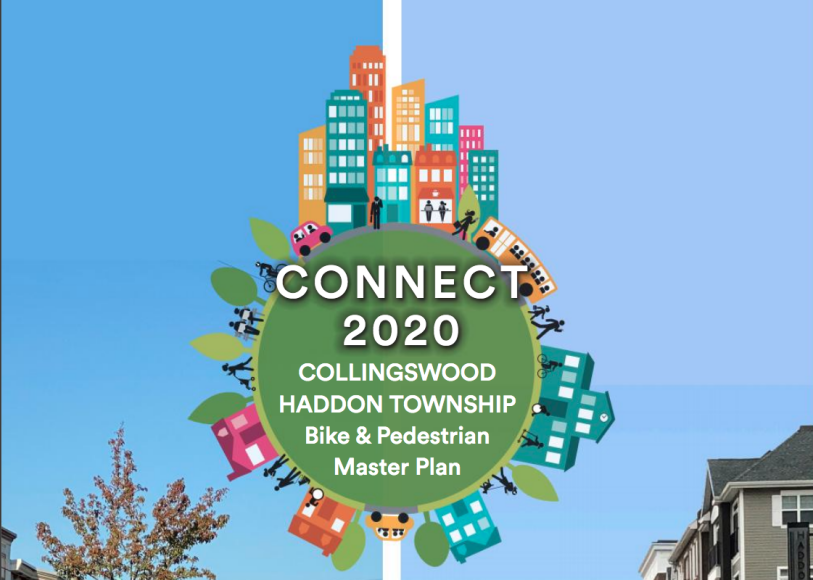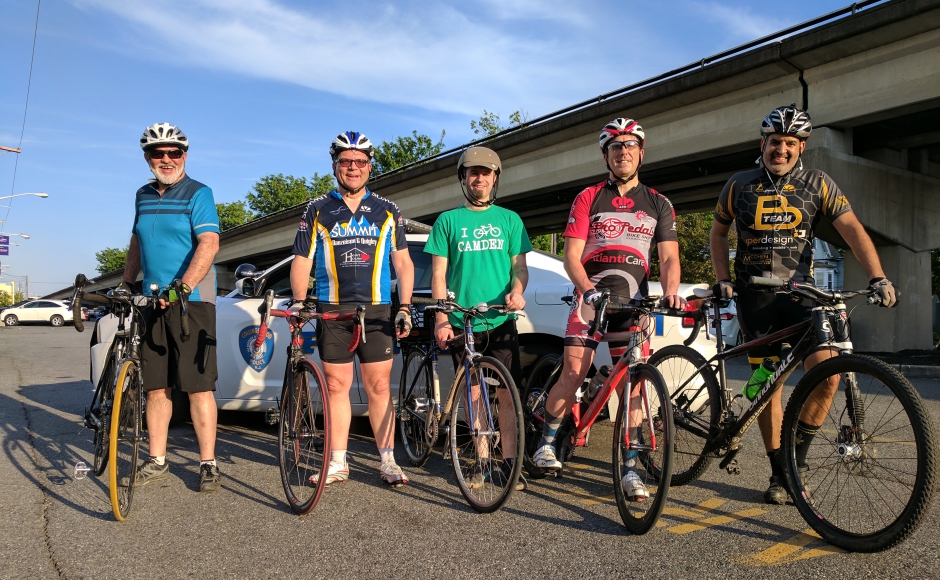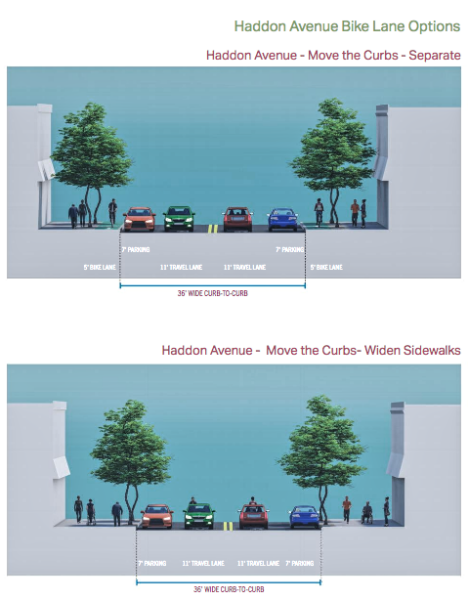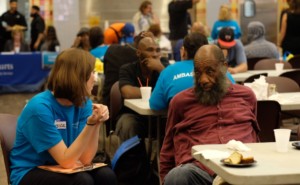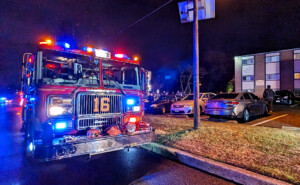The plan establishes a five-to-10-year roadmap for bike and foot traffic in both communities, with a number of recommendations for safer travel, smarter roadway design, and future projects on an achievable timeline.
By Matt Skoufalos | February 3, 2021
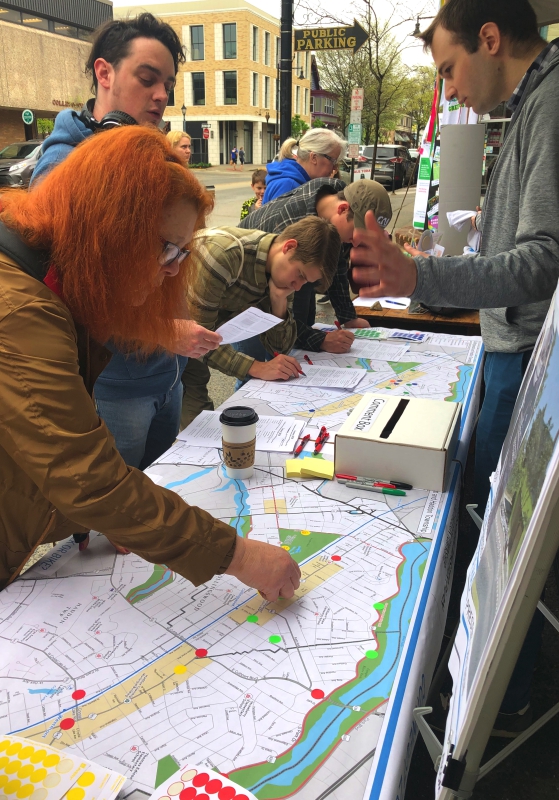
Collecting data for the Collingswood & Haddon Twp. bike and pedestrian master plan at the 2019 Collingswood Green Fest. Credit: Doug Robbins.
As walkable and bikeable as communities like Collingswood and Haddon Township are, both towns still see their annual share of vehicle collisions with pedestrians and cyclists.
Over the past three years, residents of the neighboring municipalities have gathered insights, drawn up maps, and applied best practices to the results of their findings to create Connect 2020, a master plan for improving bicycle and pedestrian travel across the area.
Project coordinator Sandi Kelly described the study as “a five-to-10-year roadmap” for both communities.
It was funded by a $72,000 planning grant from the Delaware Valley Regional Planning Commission (DVRPC) in 2018, and supplemented by an additional $2,400 from the municipal governments of Collingswood and Haddon Township, as well as in-kind support from their staff.
Engineering firm AECOM drafted the report with input from local volunteers and hundreds of community members, who responded to the Connect 2020 online survey, marked up an interactive map with their comments, and weighed in at local workshops.
“We did a lot of public outreach,” Kelly said. “We went above and beyond because we really wanted a community-driven plan.”
The final plan was ratified by the Collingswood and Haddon Township municipal governments in September 2020. With the guideposts of the study in place, focus in both communities now shifts to the best ways to implement its recommendations.
To start, Kelly said a steering committee of stakeholders from both towns will “shepherd these projects” when the opportunities arise, as well as ensuring that any new projects don’t conflict with its recommendations.
“Any plan is a fluid document,” she said. “It’s a road map, it’s a guide; but conditions change, and if we have an engaged group really working on these things, we can identify those things as we move forward.”
Haddon Township Mayor Randy Teague called Connect 2020 “something we’ve been looking forward to for a long time.
“This plan is really the beginning of putting something together,” Teague said. “The timing is good because more people are walking and biking [during the pandemic].
“The more safe and easier we can make it for people to travel, the better,” he said.
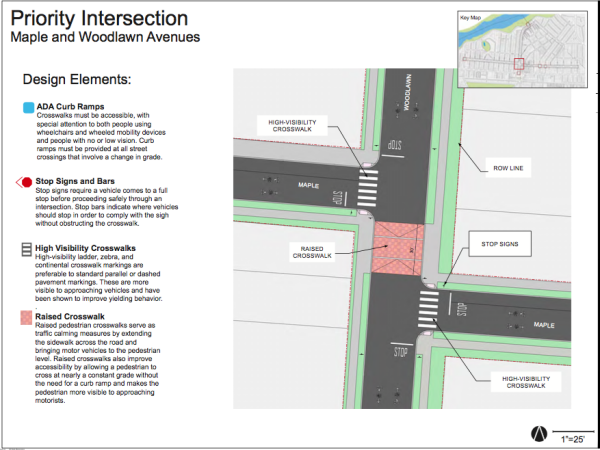
Plans for a bike boulevard along Maple Avenue include a raised intersection and traffic calming measures. Credit: Connect 2020.
First steps
Collingswood is already set to tackle one of the first projects outlined in the document: creating a “bicycle boulevard” along Maple Avenue.
The designated path runs from Penn Avenue to Browning Road, east to west, and then along Woodlawn Avenue all the way to South Park Drive.
AECOM Senior Planner and Urban Designer Doug Robbins said the group has already applied for a federal Transportation Alternatives Program (TAP) grant to cover the cost of the project, an estimated $700,000 to $900,000.
“We wanted to focus on something that was achievable,” Robbins said; “something that people would notice, and see and feel like something was happening.
“The idea of a bike boulevard is for people to have a safe place to walk and ride, and to slow down vehicle traffic so it’s safe for everybody,” he said.
More a function of a complete streets plan than a novel concept, a bike boulevard seeks to limit vehicle cut-throughs and reduce speed via traffic-calming measures like high-visibility crosswalks, speed cushions, pavement markings, and signage.
“A lot of this is good nuts-and-bolts stuff; it’s all those things that we feel can make a pretty dramatic physical impact for not a ton of money,” Robbins said. “No parking rules will be changed. It’s just about creating a safer space for all modes [of travel] to share.”
Intersections along the boulevard will be brought into compliance with standards outlined in the Americans with Disabilities Act by painting crosswalks and installing ramps and curb cuts “so it’s safer for folks moving along these corridors, but also crossing them,” Robbins said.
“Woodlawn’s a major cut-through to the park, and Maple is a spine that connects at least two schools, the pool, and serves as the primary detour when any major thing happens on Haddon Avenue,” he said.
“For bicyclists, it really becomes about making it a consistent and safe and slower street; creating a physical space that drivers feel inclined to go slower in.”
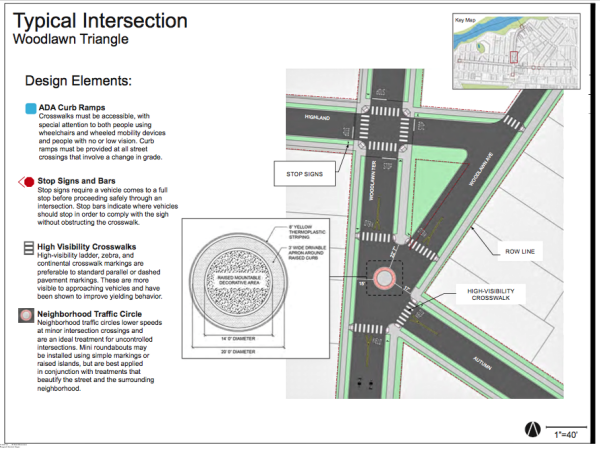
A neighborhood traffic circle at the Woodlawn triangle can help pedestrians navigate an unusual Collingswood intersection. Credit: Connect 2020.
Two of the major physical interventions that the project envisions are a raised intersection with crosswalk at Woodlawn and Maple Avenues, and a neighborhood traffic circle at Woodlawn Avenue and Woodlawn Terrace.
The proposed changes create cleaner intersections with what Robbins described as “a purposeful pedestrian path.”
“What you see on the plan is based on best practices of similar intersections and similar low-cost interventions,” he said.
“It’s something that fire trucks or ambulances can drive right over, but that your average driver is going to look to avoid.”
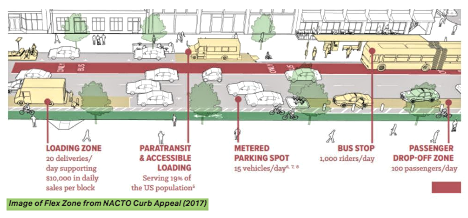
“Flex zones” create temporary spaces in downtown shopping areas that can accommodate a variety of uses. Credit: Connect 2020.
Low-cost policy recommendations
Other low-cost ideas presented in the plan include a handful of policy recommendations that could make a big impact without a lot of effort.
Banning right-hand turns at red lights, which the study notes “disproportionately impact pedestrians and bicyclists,” might eliminate a small convenience for drivers, but can prevent a significant degree of unnecessary harm to non-vehicle traffic.
Similarly, reclaiming parking lanes as “flex zones” takes back another seven to nine feet of roadway for use as outdoor seating, loading zones, stormwater infrastructure, bike parking, and more (including vehicle parking). This policy change “can have significant positive effects for local businesses who may better use the curb space, and local business districts who may benefit from a more attractive and active streetscape,” the report notes.
“The idea for flex zones came out of a pretty consistent message we got from the boroughs, and businesses and residents too,” Robbins said.
“Curb space is precious, primarily because of the lack of alleys and rear access to the back of the buildings,” he said. “With the dance of daily life along the retail corridor like this, you’ve got to be really efficient and smart with your curb space.”
Some of the biggest improvements that could help make conditions safer for all modes of transit involve advocacy efforts and outreach around pedestrian, cyclist, and driver education. These include identifying safe routes to school, a program supported by the New Jersey Department of Transportation, re-evaluating bike-to-school policies, and implementing Complete Streets plans in both communities, starting with a handful of priority corridors.
“We would often talk and think about the segments both in Haddon Township and Collingswood as islands, where, within the island, people felt safe and comfortable walking and biking,” Robbins said.
“But really, think about Haddon, Woodlawn, South Park, Cuthbert as moats or barriers that restrict access from island to island.
“We start to map that, and that’s where a lot of our priority corridors for pedestrians and bicycles came from,” he said.
Many connection issues for pedestrians and cyclists occur at major local intersections that may need to be redesigned to reclaim sidewalk space and install protected bike lanes, realigned to improve visibility for drivers, or supported with expanded pedestrian refuge areas.
Several of those that would require the most work are along Collings Avenue in Collingswood (at Haddon Avenue, Atlantic Avenue, and the White Horse Pike) as well as at Haddon Avenue and Cuthbert Boulevard at the border of both towns.
In Haddon Township, the priority intersections include Cuthbert and Emerald, and Haddon Avenue and Crystal Lake Avenue, and Park and Chestnut Avenues.
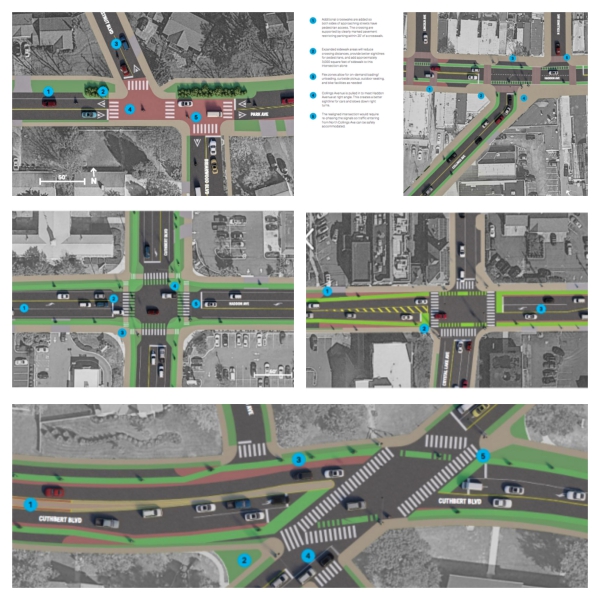
A snapshot of some of the intersection improvements outlined in the Connect 2020 plan. Credit: Connect 2020.
Another major concept outlined in the report is a question that has been popular with cyclists for years: the idea of installing protected bicycle lanes along Haddon Avenue.
AECOM presents a handful of options for doing so:
- dedicating five feet of roadway from the current street to bike lanes
- removing street parking on one side of the roadway
- adding raised bike lanes between parking and the sidewalk
- reclaiming five feet of roadway on either side of Haddon by restoring its historic curb line, which existed prior to a 1959 widening of the street.
The report also notes that adding protected bike lanes along Cuthbert Boulevard could be an easier adjustment to make given the sufficient width of the roadway.
Beyond even those recommendations is a subset of notes the report identifies as “big ideas,” which would require significant investments of state and federal money to implement.
They include things like reconstructing access to Ferry Avenue via Haddon Avenue, which currently requires traveling around a blind curve under Route 130.
Another involves the Westville Cutoff, “a never-used rail right-of-way” connecting Gloucester City to the Cooper River.
Finally, the report also contemplates creating a second pedestrian and bicycle bridge across the river itself.
“As a standalone project, from the go, that seems hard to get off the ground,” Robbins said. “But that bridge over 130 is going to have to be reconstructed one day, and when it is, that’s the time to revisit these big ideas.
“Collingswood or Haddon Township or even the City of Camden’s never going to get enough money to get pedestrians and bikes to Ferry Avenue,” he said, “but when that is all reconstructed, [it could eliminate] such a massive barrier for folks.”
Simply committing these projects to the report itself helps keep the idea of them alive enough to persist in the future, Robbins said.
“If something happens there that could be used in the future, then there’s precedents,” he said. “That’s important for a lot of those future projects: they’re easier to mention and easier to fund if they’re mentioned.”
To read the Connect 2020 plan in full, click here.


